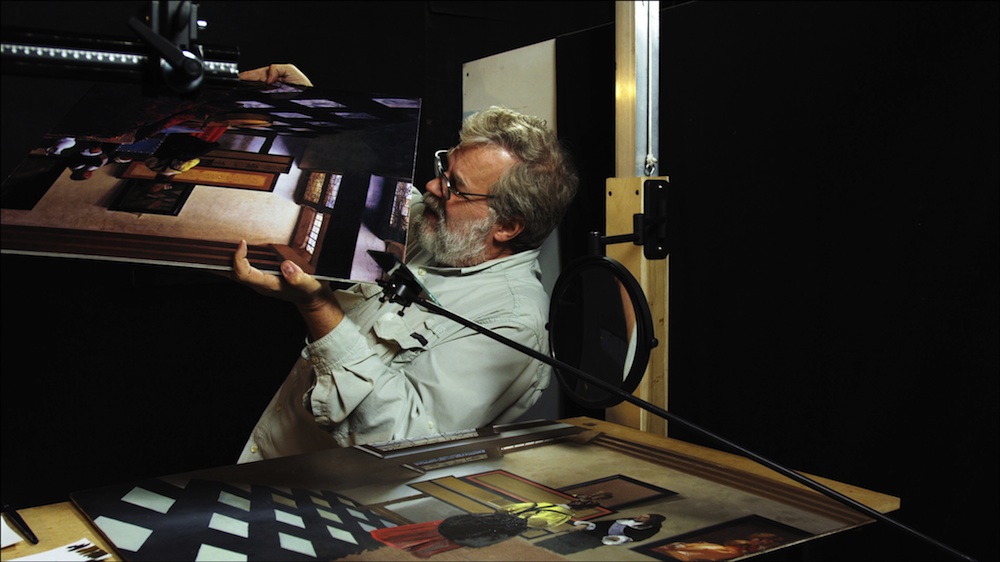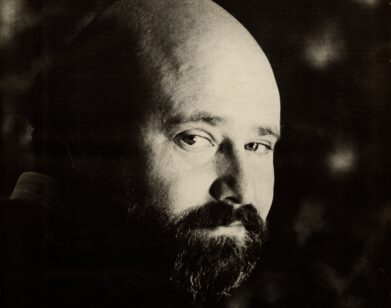Accidental Artist

ABOVE: TIM JENISON IN TIM’S VERMEER
Tim Jenison is not an artist. He can, however, paint a near-perfect replica of a 17th-century Dutch oil masterpiece. After reading David Hockney’s 2001 book Secret Knowledge: Rediscovering the Lost Techniques of the Old Masters, Jenison became obsessed with Johannes Vermeer’s ability to achieve an unprecedented level of photorealistic detail. The Texas-based inventor, electronics designer, and computer programmer developed a theory and set out to prove it by painting his own version of Vermeer’s The Music Lesson. When he told his longtime friend Penn Jillette of his plan, his whimsical hobby turned into a four-year film project, Tim’s Vermeer, produced by Jillette and directed by his performance partner, Teller.
EMMA BROWN: Whose idea was it to make a film?
TIM JENISON: Penn Jillette had the idea. I didn’t have any grandiose plans. I thought I’d put something on YouTube. I was talking to Penn over dinner and he said, “I don’t want to talk about show business. What else can we talk about?” I said, “Well, I think I figured out how Vermeer painted those pictures.” And he said, “What?” And I said, “I think he was using an optical machine.” He said, “Why don’t we make a movie?” We pitched it to several companies and nobody bet on it. One lady said, “We just don’t think you’re going to be able to paint a Vermeer.” Other people may have thought it was a Penn & Teller sting operation, because they do that sort of thing. We decided to produce the film ourselves as cheaply as possible. Nobody knew what was going to happen—we didn’t even know if it was going to work. Before I started painting, Teller said, “Tim, if this doesn’t work, it’s going to be a very different movie.” And I said, “There won’t be any movie, right?” He said, “Oh yes there will.” I had to make it work or have a very embarrassing documentary.
BROWN: The Queen of England owns The Music Lesson. Does she ever lend it to museums?
JENISON: Yes, I believe the Queen takes it to events that she’s at, I guess because she’s the Queen. Sometimes it’s on view to the public, but at the time we were there, it was not. We had to try to get special treatment to see it. It is totally different than the pictures I’d seen—different colors. It looks a lot more like my picture than the reproductions.
BROWN: Would you ever do this again?
JENISON: I don’t think so, but I’d like to try a couple of simple experiments regarding Caravaggio. It seems to me that he used a simpler version of my device. It may even go back to Leonardo da Vinci—I’m seeing faint glimmers.
BROWN: You don’t consider yourself an artist?
JENISON: Oh, no. But there is an overlap between technology and art, invention and creativity. People think of computer programmers as nerds who do a lot of arithmetic, but it’s not like that. When you’re writing a program, you’re inventing new things—it’s a very creative process. We think of an artist as wearing a beret and a smock and walking up to a canvas with a brush, but art is made with computers more and more.
BROWN: Do you remember your first invention?
JENISON: One of my first inventions that I actually wrote down and made almost a patent application for, I was probably in fifth or sixth grade. It was a special tape recorder that would automatically change its speed depending on how much sound was coming in. So if there was a lot of high-frequency sound this tape would speed up to be able to record it better, and then it would slow down to save tape. [But] when you played the tape, it would play it at the right speed. I never built one, but in theory it would work. Of course there’s no need to have tape recorders anymore.
BROWN: Have you ever had an invention that should work in theory, but just went horribly wrong when you tried to put it together?
JENISON: Almost all of them don’t work when you first try. [laughs] That’s the process of invention, really. It’s an iterative, repetitive process of trying one thing and then refining it—trying something different. Every once in a while you’ll have this beautiful idea that just works, and that’s what I thought I had with the comparative mirror. I thought that it would be very, very straightforward to paint the Vermeer using this idea. It just seemed so elegant and simple. And it did work; my first experiment did work very well, where I painted my father-in-law’s high school graduation picture. But once I built Vermeer’s studio and set it up and tried to paint, I ran into problem after problem and it required several more inventions to make it work. It got a little more complicated each time. I started with just a simple mirror, then to try to make Vermeer’s camera I added a lens and it didn’t work—it wasn’t bright enough, it wasn’t sharp enough—so I had to add a third mirror. Those were all separate developments. When I got the Queen’s picture as a computer file, I was able to look at it in very high resolution. I could see more and more evidence that Vermeer used exactly the setup that I used, even though it’s kind of complicated. I can’t find any other explanation for some of the distortions that I see in the Queen’s picture.
BROWN: Would you have given up on the painting if it weren’t for the film?
JENISON: I eventually would have finished it. As Penn said, “He would have finished it, but he may have died before.”
BROWN: You built an exact replica of the room in the “The Music Room,” what did you do with all of your newly acquired 17th-century furniture after the film?
JENISON: The entire room is still sitting there exactly as it was when I finished the painting. I figure somebody might be skeptical enough to demand to come and see it.
TIM’S VERMEER IS OUT NOW IN LIMITED RELEASE.






